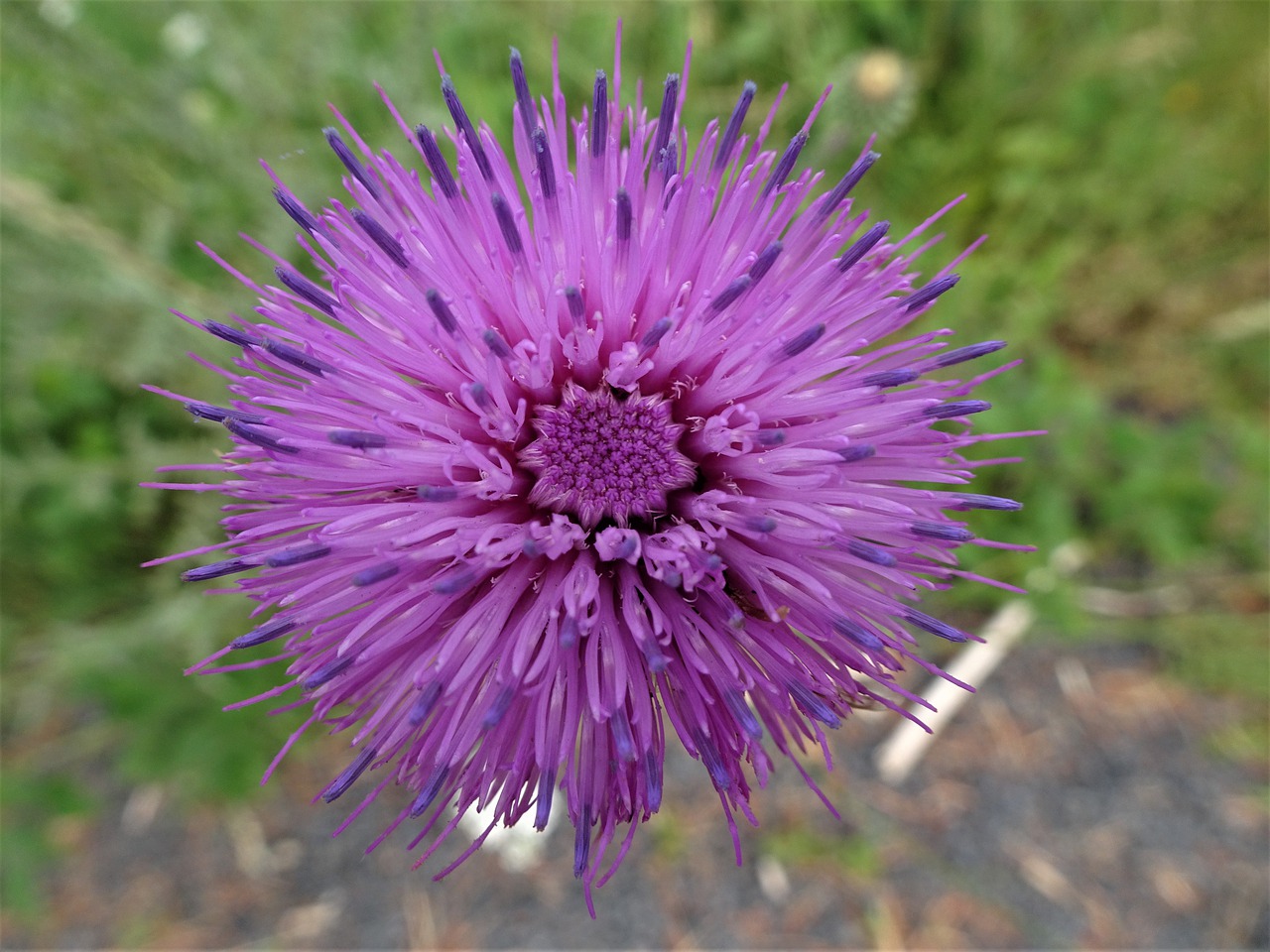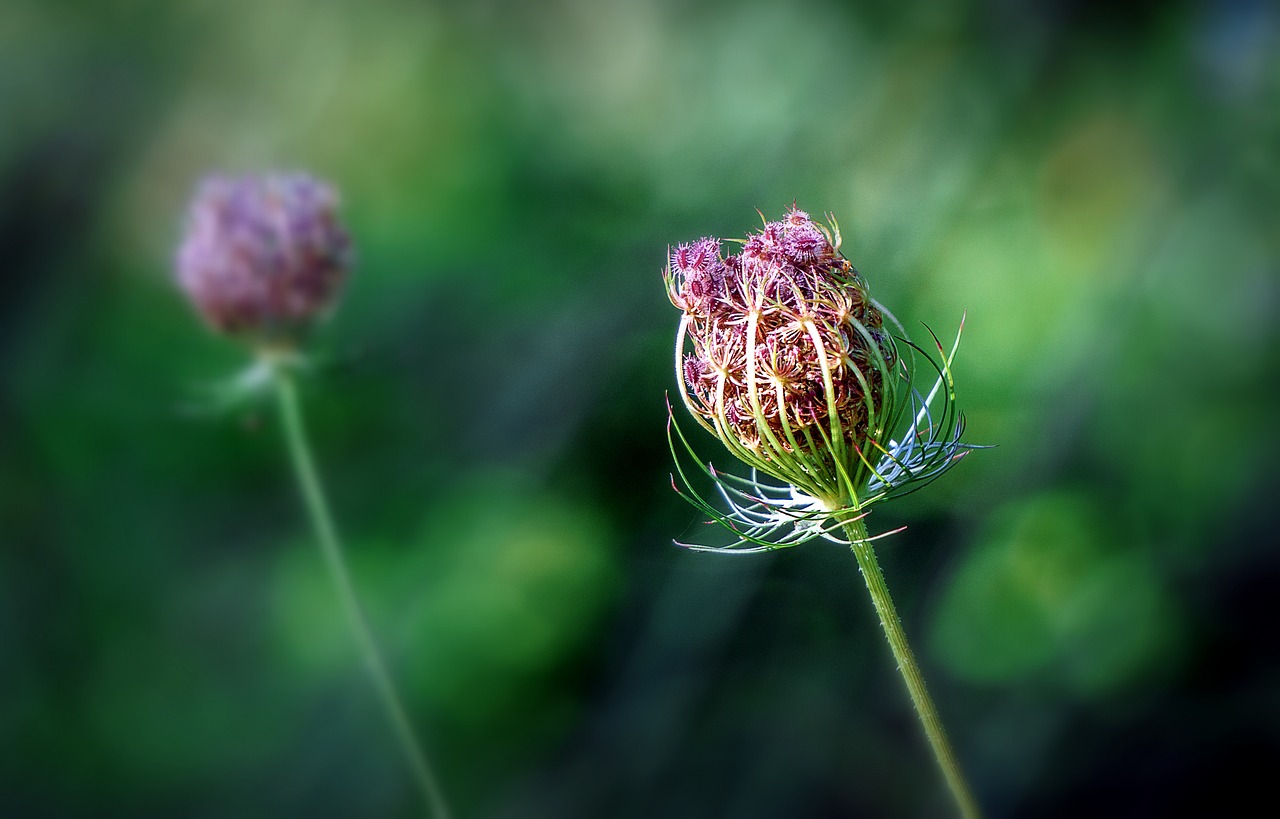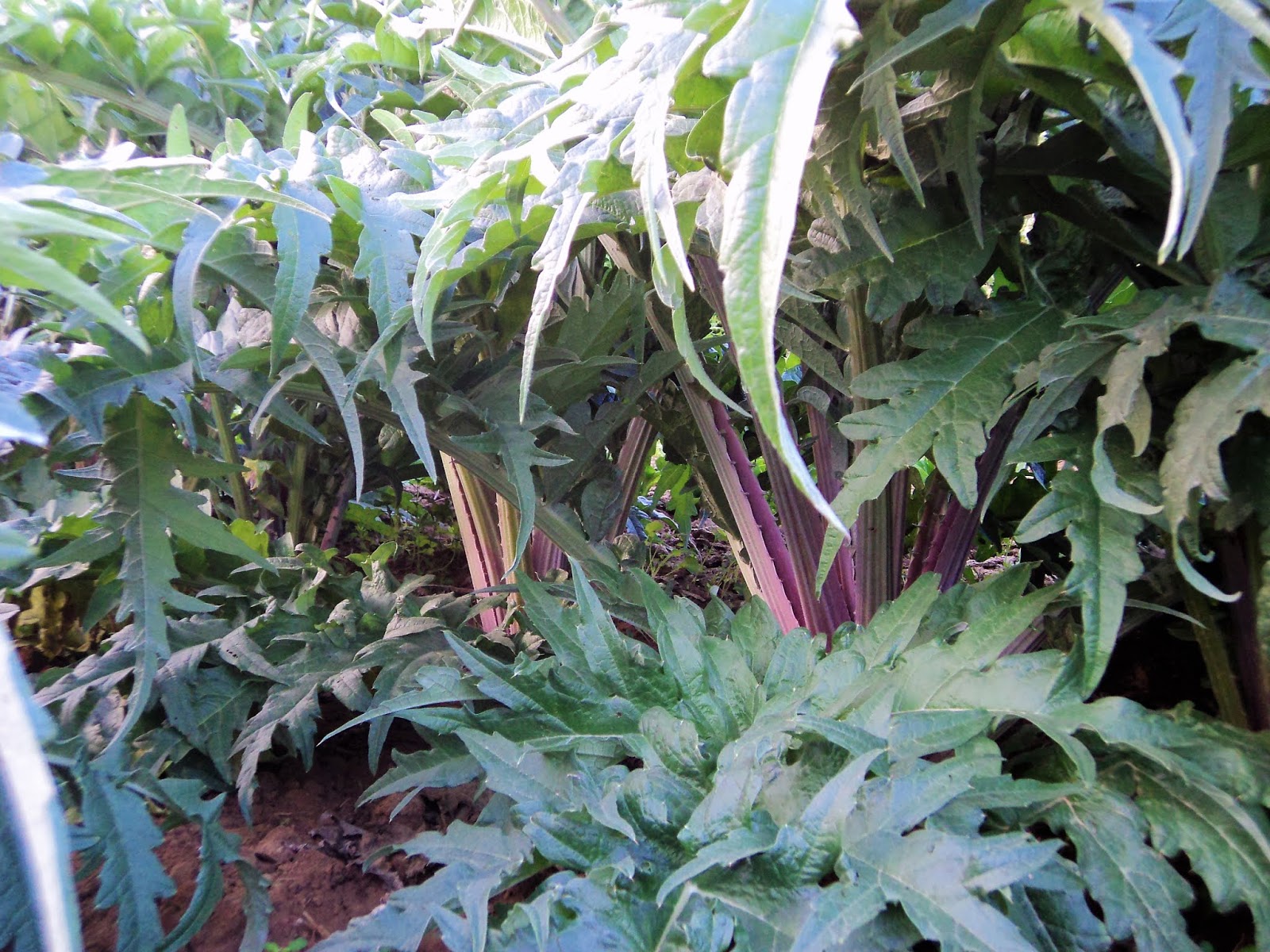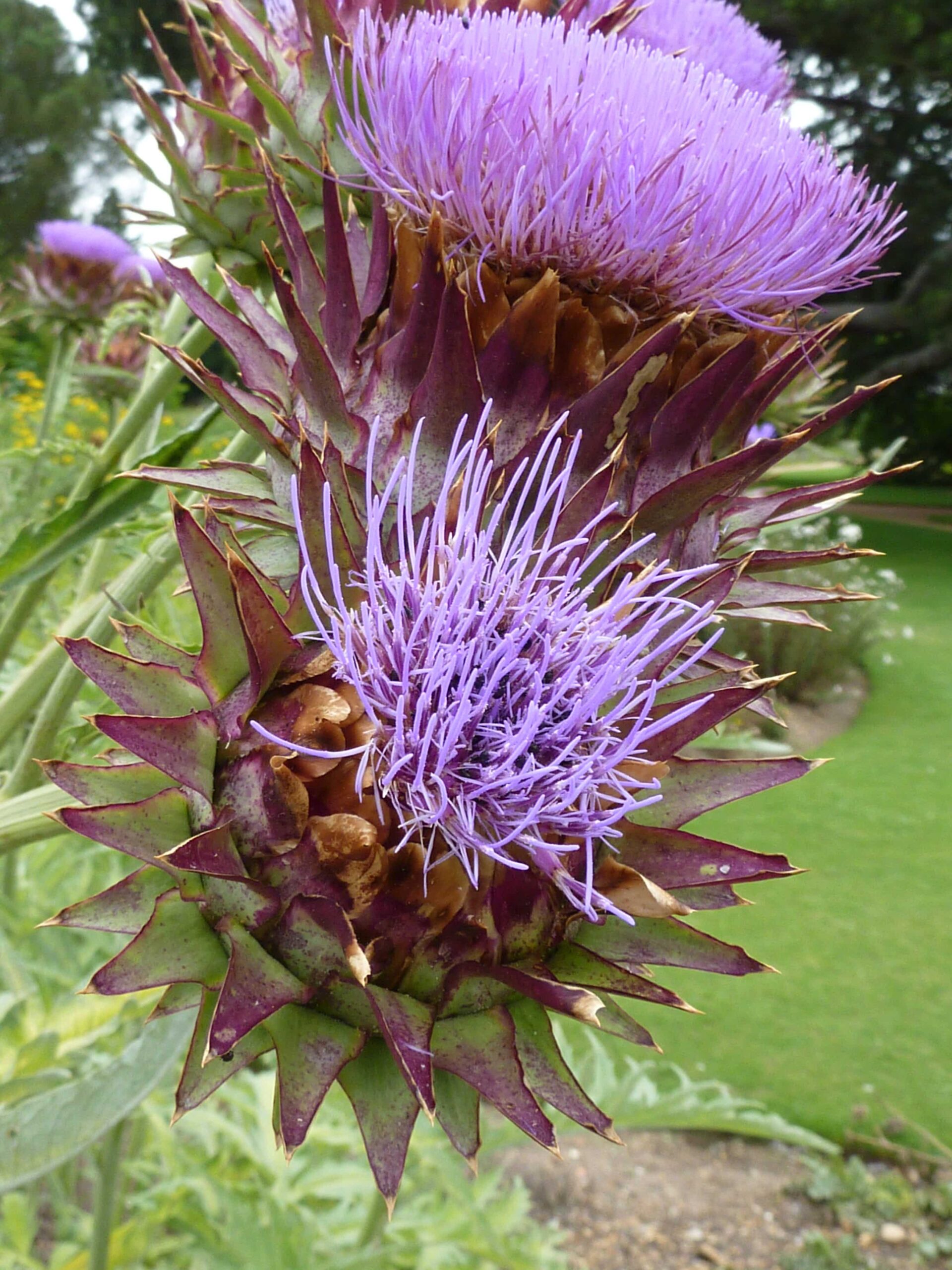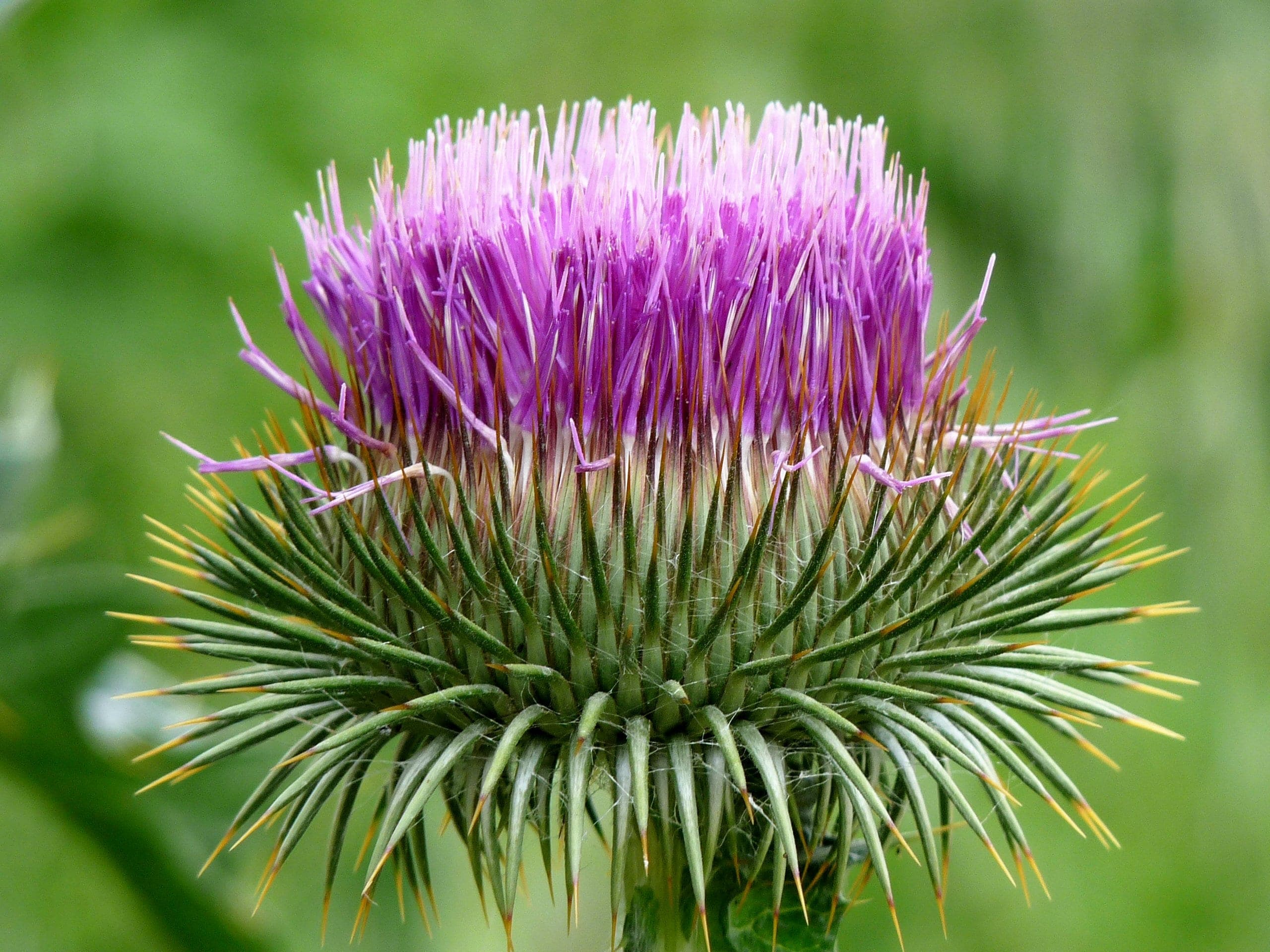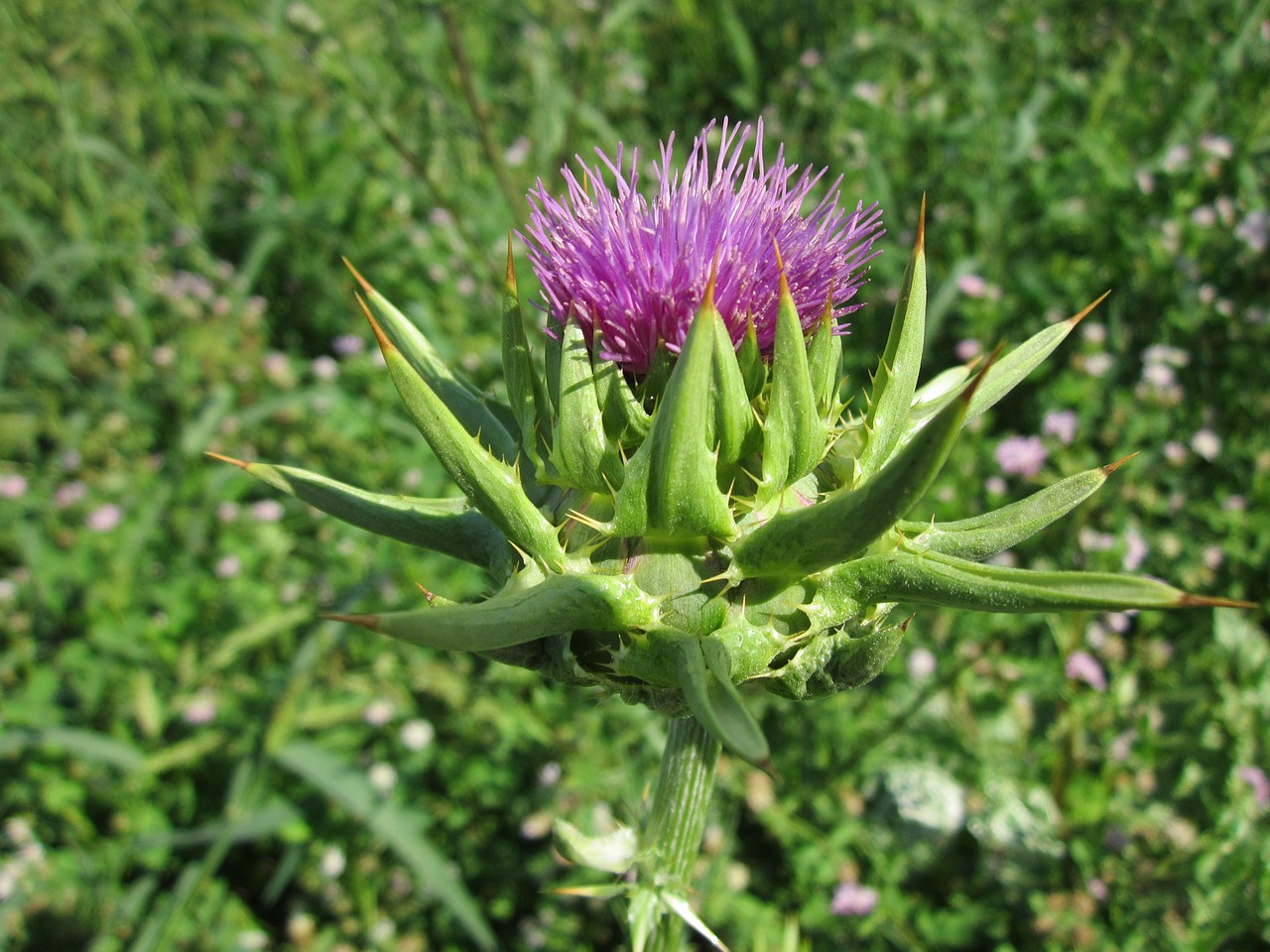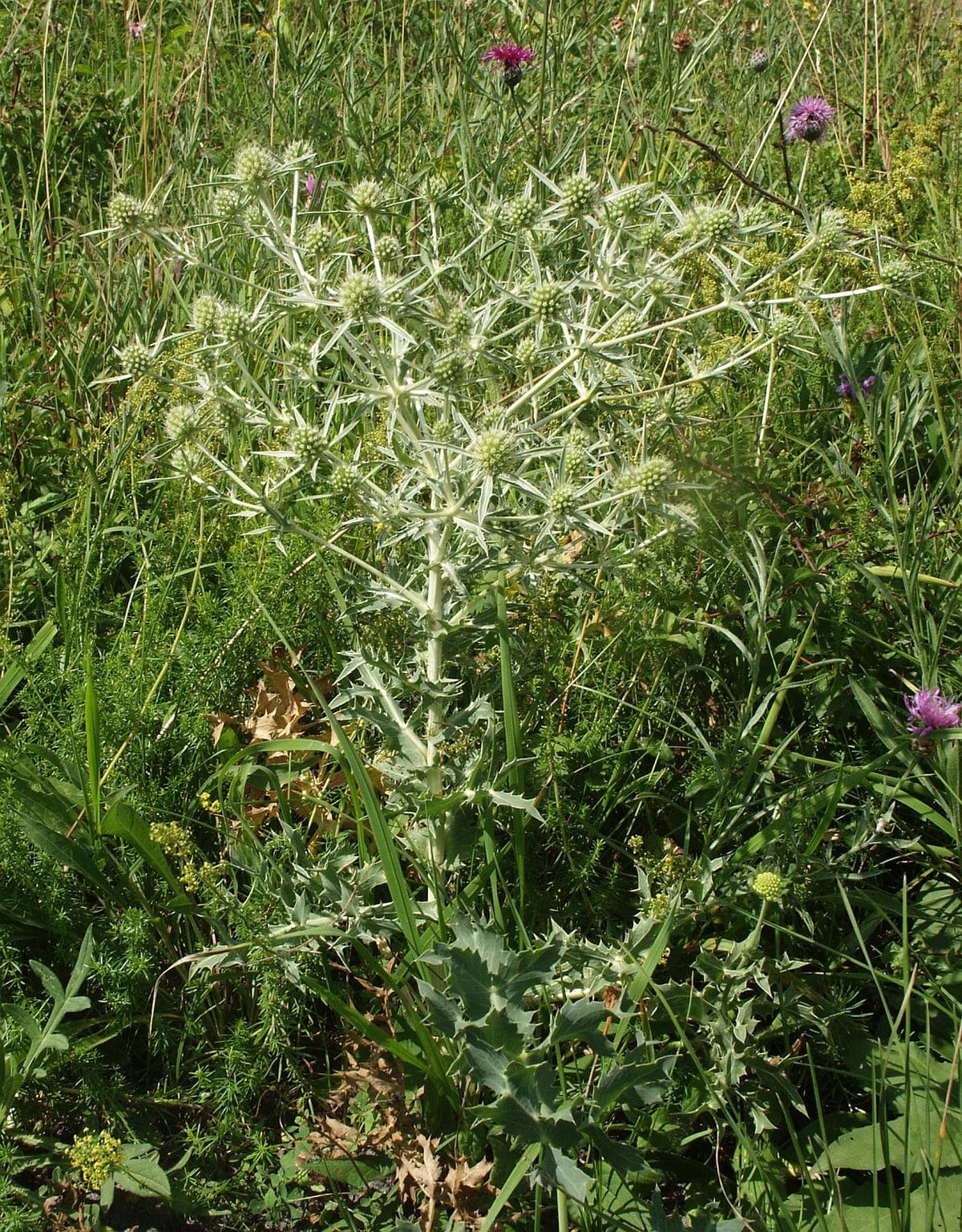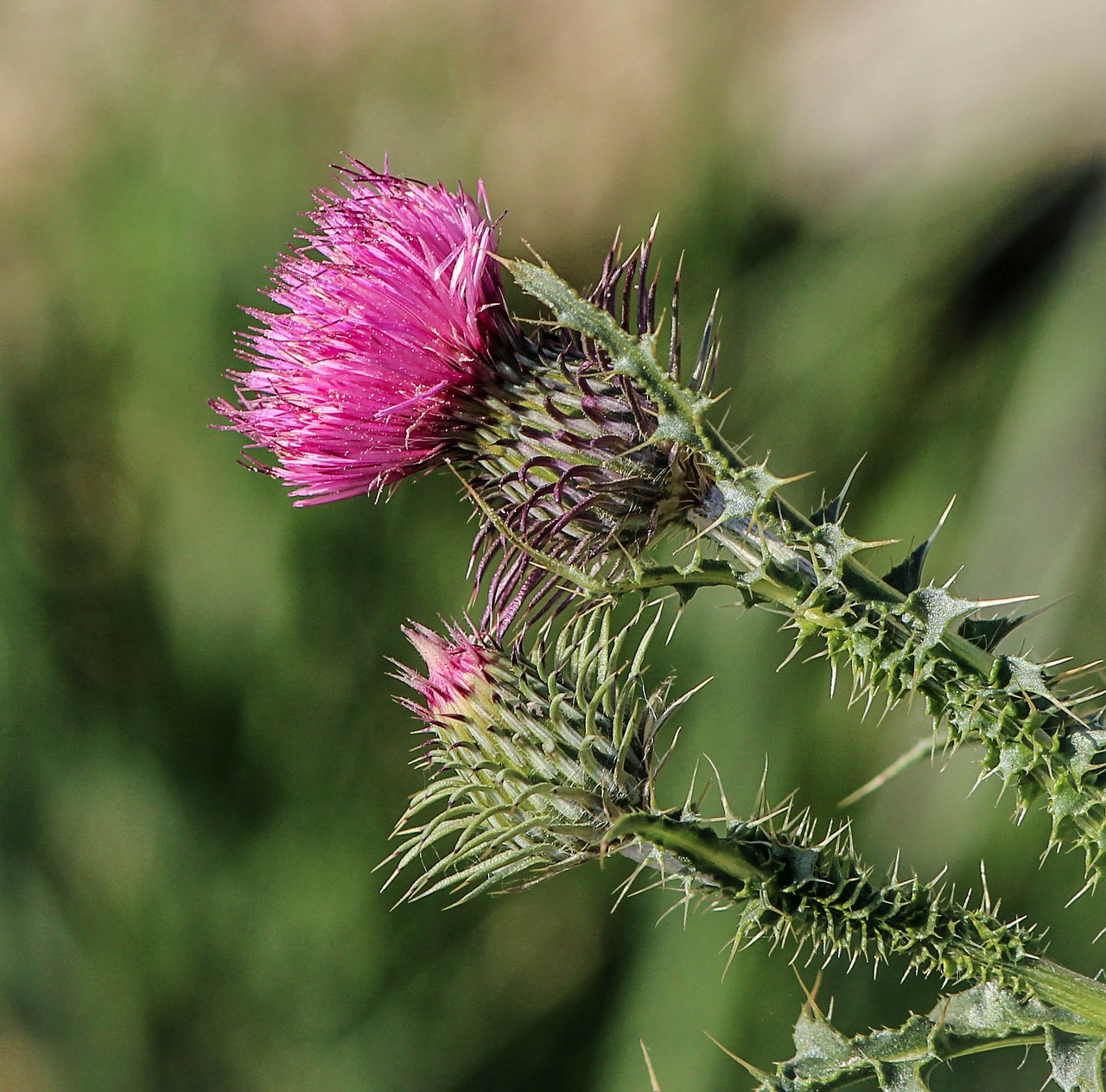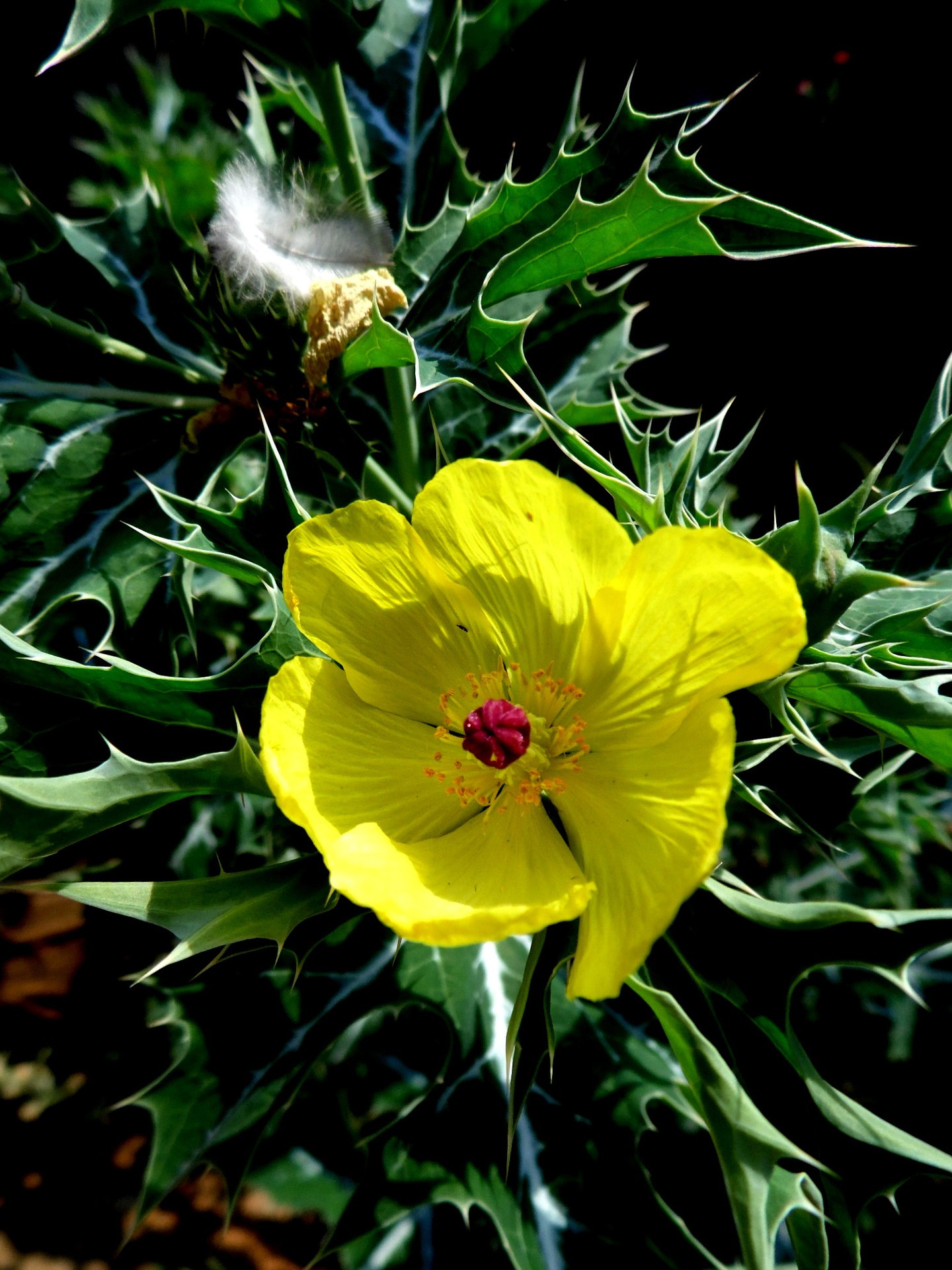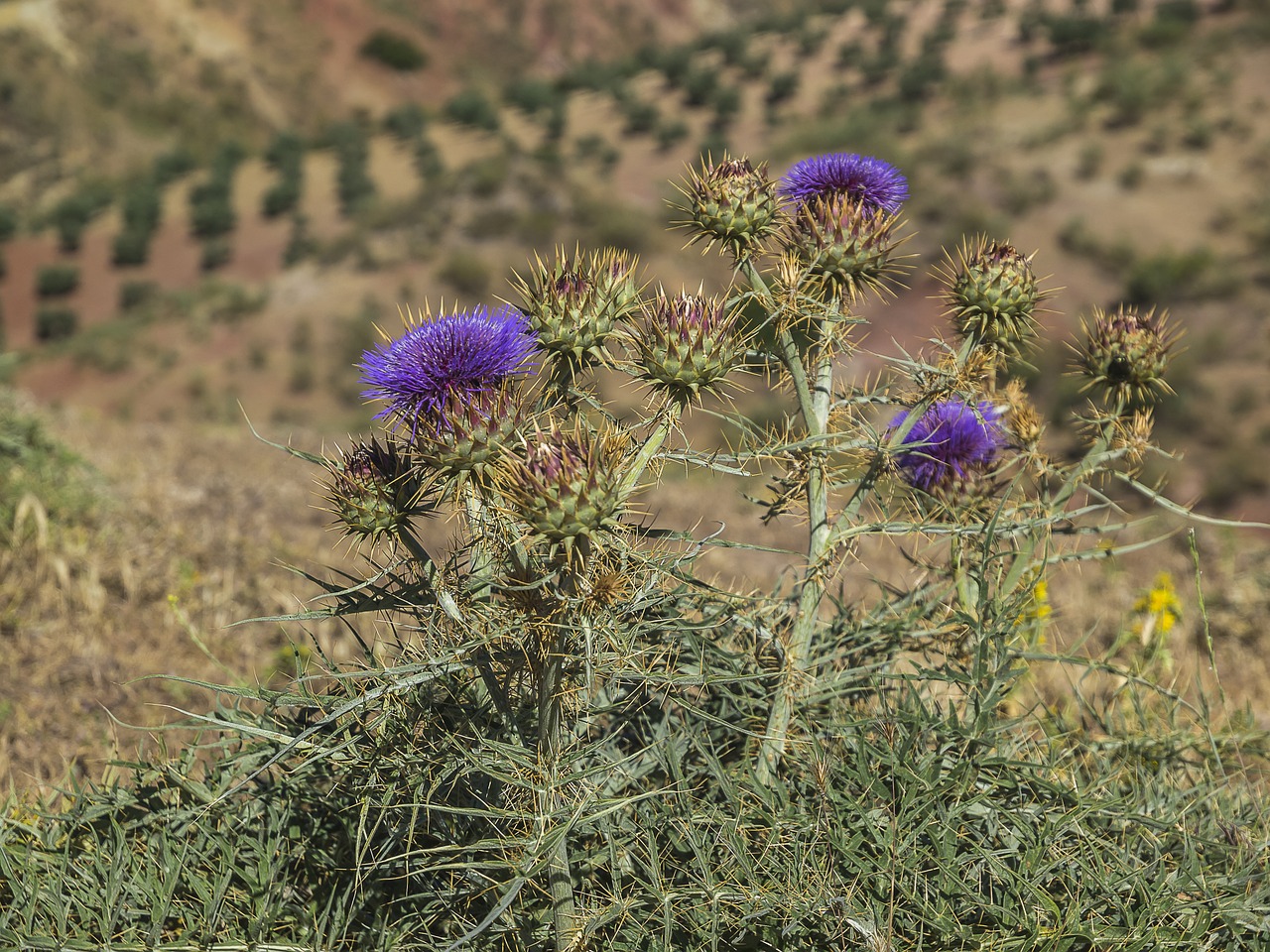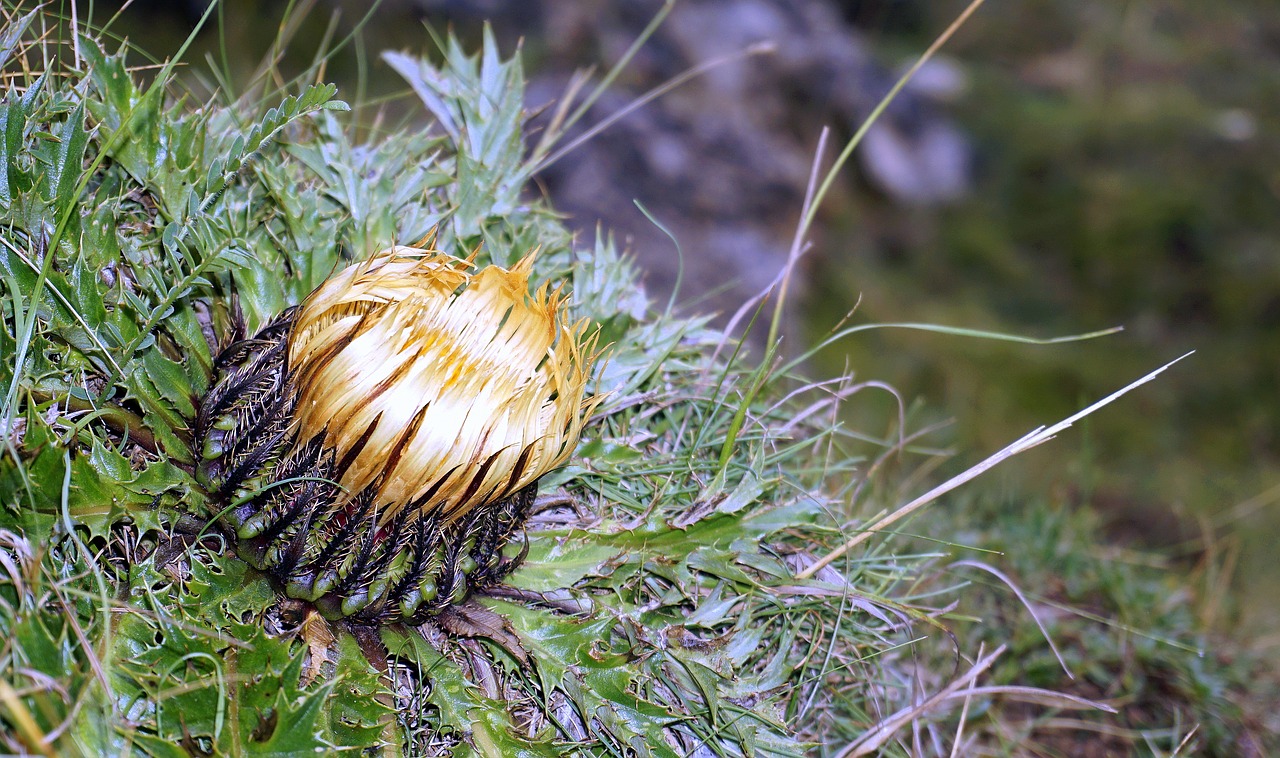El borriquero thistle It is a very particular wild plant, with many thorns and beautiful flowers. Here you will find all the information you are looking for about this wild plant known as borriquero thistle Do not miss it!
What is Borriquero Thistle?
The beauty of plants is not only based on beautiful flowers and leaves, but also on the fact that they are able to grow, develop and change as time goes by. They prepare their own path, that is what makes them very beautiful and strong species.
El borriquero thistle It is a very particular wild plant, native to Eurasia and the Mediterranean, however, it can be found anywhere in the world, especially in Russia and Europe, where it usually grows on the sides of roads and in open spaces.
The plant is very particular, since it has many thorns and for this reason it is very difficult for someone to want to have it in their garden, although we must emphasize that it has spectacular flowers and they work as an excellent ornament. In addition, it is a plant that has very interesting characteristics.
El borriquero thistle it is a strong and vigorous plant, it has different grayish-white or grayish-green stems, although the latter occurs very rarely. Its leaves are a bit fleshy and can reach a height of up to 2 meters, but it also has a lifespan of about 2 years, then it dries up and dies.
Secondly, "borriquero thistle” is also used on some occasions to describe a person as surly or difficult to treat, since there is a certain similarity in the use and management of the plant, because although it is a very beautiful species, it is also very unpleasant to approach due to its remarkable thorns .
Description of Borriquero Thistle
The scientific name of this plant is "Onopordum Acanthium" and is popularly known as borriquero thistle, Toba, borriquera artichoke, Mantle of Judas, among others. It is a biennial or annual herbaceous plant, belonging to the Asteraceae family, as well as vegetables, such as lettuce, endive, escarole and chicory.
Historically, it is recorded that this plant was widely planted by the Romans, because it was known as a very exquisite food and could only be consumed by wealthy upper-class people.
In its place of origin, the plant can grow naturally and the crop spreads as part of the Flora and fauna from various countries, including France, Italy, Spain and Argentina. In this last region it grew and adapted perfectly in a very fast way in the plantations of the plain, for which it became a very invasive species.
Characteristics of Borriquero Thistle
Next, we will mention some of the most remarkable characteristics of this incredible plant:
- It is a vegetable that is grown annually.
- It grows in warm and temperate climates worldwide.
- Native to Western Europe, North Africa, and western Asia.
- It can be up to approximately 2 meters high.
- It is considered one of the vegetables that reign in winter, since they are very rich, but they do not provide many nutrients for health.
- They can be easily found on roadsides, watercourses, highways, vacant or farmland, which means that they grow anywhere from sea level to 2.000 meters above sea level, all thanks to the fact that they adapt very well and is very resistant, that is why it is said that this plant is very particular.
- The life cycle of borriquero thistle It is biennial or annual, which will depend mainly on weather conditions, since they grow very quickly.
- Its stems are slightly branched, greyish-white in color and covered with unicellular hairs. It is made up of stalks or petioles, characterized by being hollow, elongated and striated.
- In case you want to use it in the kitchen, it is necessary that the thorns of the stem are cleaned very well before preparing it.
- Its leaves are a bit fleshy and measure approximately 35 x 17 centimeters. This means that its leaves are extremely large and greenish, while inside they are small and white.
- The flowers of the borriquero thistle they occur during the summer period, where they appear grouped in chapter-shaped inflorescences, which are too beautiful.
https://www.youtube.com/watch?v=tNc6OIAU7YU
Types of Borriquero Thistle
Interestingly, there are also different types of borriquero thistle, which we mention below:
Red Corella Thistle
The Red Thistle of Corella grows more during the dates close to Christmas, a season in which you can see much more orchards in the Ribera, especially in the south of the Foral de Navarra, which is one of the areas with the greater production of the red thistle, where the immense rivers are covered by the ripening of the red thistle of Corella.
When the plant reaches a certain height, one or two months before it can be eaten, it must be buried in the ground to obtain large mounds, which are also known as gutters with approximately 2 meters in height.
Navarre Thistle
The Navarre thistle is one of the most common, because it is a very rich and high-quality vegetable, which can be easily obtained on the banks of roads and rivers.
In addition, it also stands out for its flavor and texture, which is very strong and combined with a little bitterness. In the places where they grow, it is very usual to cover them when they sprout, either with soil or bags, in order to protect them from sunlight.
Borriquero Thistle
Also called ansarina or borriquera artichoke, it is a plant that has managed to spread throughout all the territories, they have a large size, where the leaves and stem are hairy with white hairs and colored chapters, which makes it look like one of the most beautiful and showy.
Its stem is covered with many strong spines, which have a rough texture and are also hairy with a dense shape, as well as white hairs that cover it.
The leaves are found alternately and do not have petioles, these are used for medical prescriptions and as a stimulant, diuretic and hypotensive, in addition, it also works as an antiseptic for the skin, to treat burns, eczema, dermatitis, wounds and sores.
Its flowers are arranged in a few chapters, so that it seems to be just one flower, used as food where they are prepared as if they were asparagus, although for this the stems must be tender and once the leaves are peeled, they can be cooked as vegetables.
Milk thistle
They are also known as "Silybum Marianum", it is a herbaceous plant belonging to the Asteraceae family and comes from the Mediterranean. Its leaves are oval in shape and measures approximately 30 centimeters.
The flowers are very intense pink, which can resemble blue-purple and usually appear in the second year, and can measure up to 8 centimeters. Its basal layer is distributed in the form of a rosette and the edges have inconstant lobes, while the spines are bright green and measure between 20 and 180 centimeters.
thistle runner
The Thistle Runner is an annual plant and belongs to the family of the umbelliferae, these can reach 1 to 2 meters in height, where the stem is subdivided and its leathery leaves are spiny on the edge, with white flowers in heads and ovoid fruit, besides prickly.
star thistle
This species is a thistle with a hairy stem, with laciniate leaves and white or purple flowers, which are arranged in lateral and seated heads, with white thorns.
Milk Thistle or Milk Thistle
It is a thistle with a straight and woody stem, which can reach 1 to 2 meters in height, its leaves are large, sinuous, toothed and have thorns, while the flowers have a shade between yellow and red, with an isolated distribution. .
holy thistle
It has a quadrangular stem, branchy and hairy, which can have a height of approximately 30 to 40 centimeters. Its leaves are sheathing, have thorny teeth and yellow flowers arranged in their terminal and scaly heads, whose juice is narcotic and purgative, but dangerous to use.
Care required by the Thistle Borriquero
El borriquero thistle it is an herb that does not need special care, however, it is a wild plant which is not recommended to be planted in pots, but it has beautiful flowers and they are very useful for you to enjoy good health.
It would be very interesting to be able to grow them, but this must be done in a country where the plant is not considered an invasive species. For that reason, in case you want to grow a borriquero thistle, it is recommended that you provide the following care:
Location
The planting of this species should be in places located outside the house, where it can have direct contact with the sun, since this plant cannot grow in semi-shade, much less in shade. For that reason, it does not grow well indoors either, because the light that enters is not enough for the plants.
Earth
This plant grows in all types of terrain, although it usually develops better in those that have good drainage. On the other hand, it is not recommended to plant it in pots, however, if you do, make sure it is a large one and fill with universal substrate mixed with 30% perlite
Borriquero thistle irrigation
El borriquero thistle It should be watered at least 3 times a week during the summer season, however, it tolerates dry seasons very well. If it were to be kept in a pot, it is advisable not to place a plate under it, since the stagnant water could rot its root system and if that happened, the plant would die.
Subscriber
Because borriquero thistle It is a plant for human and medicinal consumption, it is recommended that organic fertilizers be used for its cultivation, such as guano, which is very rich in nutrients, in addition to mulch, the manure of herbivorous animals and compost.
You just have to keep in mind that if liquid fertilizers are used, it is extremely important that the instructions specified on the package are followed, otherwise the roots could be damaged by an overdose.
Pruning
This species does not require pruning, however, dry, diseased or weak leaves can be removed, as well as flowers that are already withered.
Multiplication
It can be reproduced by means of seeds in spring, by a procedure that must be carried out in individual pots with universal substrate, burying it a little and finally, placing the seedbed outside in full sun, in this way they will begin to germinate very shortly. weather.
Rusticity
The plant is very resistant to cold and frosty seasons down to -7ºc, however, with these climate characteristics the flowers dry.
Planting or transplanting time
Anywhere you want to plant the borriquero thistle, whether in the garden or in a larger pot, it should be noted that the time to do it is during the spring season, after the risk of frost has passed.
Which means that its planting must be done between the months of July and the end of August, all in reference to its harvest, which must begin at the end of autumn, extending throughout the winter.
Currently, cardoon crops have spread throughout Europe and the main producing countries are Italy, France and Spain. In this last region, thistle production extends to most of the places where the artichoke is cultivated.
Main uses and properties
El borriquero thistle It is a very unusual plant in gardens or in pots, first of all because the plant is very invasive and has many thorns, however, it is easy to find it in many parts of the world, such as New Zealand, the United States and Australia, but this The plant also has many medicinal and nutritional properties.
So that it is possible to use both the leaves, the roots and the stems, with the intention of fighting diseases and liver problems. In addition, the fruits, as they contain histamine and thyroidin, are a good remedy to control blood pressure in those who have low blood pressure.
El borriquero thistle Generally, it does not need to receive any type of maintenance. In addition, it is a plant that can provide a very colorful touch wherever it is found, in addition to serving as a medicine to treat some diseases. Thanks to all these aspects, it is possible to have this plant in the garden without many inconveniences.
Food uses of borriquero thistle
- The capitula receptacles have a lot of inulin and are also eaten in the same way as the artichoke.
- Its tender stems are prepared to be eaten like asparagus.
- The seeds produce oil that can be used for cooking.
- Its leaves are peeled and cooked as a vegetable while the young roots can be boiled and served with butter.
- In addition, the juice from its stems is fermented and used to liven up parties and carnivals.
What are the benefits of Thistle Borriquero?
Among the active principles of this peculiar species, we can mention some such as; alkaloids, flavonoids, aesculine, glycosides, tannins and other principles.
Traditionally in ancient times, peasants, elders and healers used it as a home remedy for bladder pain, cough and poorly healed wounds. In addition, with the fermented juice of the plant, the parties were animated in other times.
The way to use it was to take the thistle when it was dry, crumble it and store it in a closed glass jar, to later use it when preparing infusions, or in the following ways:
- Preparing tinctures that allow conservation for longer.
- Preparing an oil extract.
- Consumed in infusions, where a teaspoon of dried plant is added to a glass of water.
Health benefits
Thistle can be very healthy and useful for human beings in several aspects, that is why we will mention all the benefits that they bring to health:
- Improves food digestion.
- Prevents constipation.
- Helps prevent fluid retention.
- It also prevents gallstones.
- It contributes to the reduction of cholesterol levels.
- It helps take care of the liver and promotes its proper functioning.
- They have a good source of insulin, for that reason they are very healthy, especially for people with diabetes.
- Formerly its roots were used for stomach pain, diuretic, stimulant, hypotensive, antiseptic, dermatitis, burns, sores, wounds, among others.
Benefits for the skin
It should be noted that milk thistle helps keep the skin healthy and healthy, this means that it also contributes to improve inflammation that may occur in the skin, in addition, it has very good antioxidant effects and for old age.
Curiosities of Borriquero Thistle
The care that this plant needs is very little, that is, from low to moderate, since it is very resistant to different types of climates, whether rainy or dry, where it can also adapt to poor quality soils and poor conditions. different cultivation.
It should be noted that the borriquero thistle it is the national emblem of Scotland, a region where it is said to be native, although there is still a lot of doubt about that. In addition, they also use it on the coat of arms of the City of Nancy, located in France.
